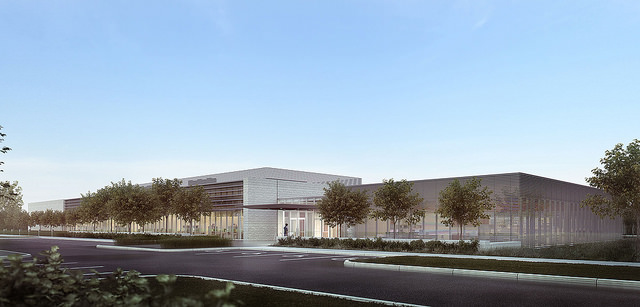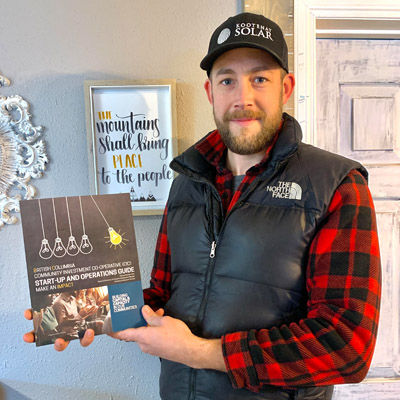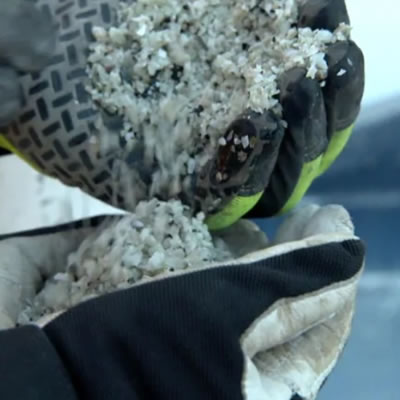Imperial Oil to build next generation research facility in Calgary
Working to increase effieciency and sustainablility across Alberta's oilsands industry

A digital rendering of Imperial Oil's new oilsands research centre in southeast Calgary. — Photo courtesy Imperial Oil
With a dual focus on increasing the efficiency of oilsands recovery technology and reducing the environmental impact of production, Imperial Oil has broken ground on a state-of-the-art research facility in Calgary that will open its doors in 2017. The new building will replace Imperial’s current research centre, which is located in the University of Calgary’s Research Park, and will be located right next to the company’s new head offices.
Having already patented the two primary methods of in situ oilsands recovery—cyclic steam-stimulation and steam-assisted gravity drainage—Imperial says the company’s new facility will focus on improving these technologies while also developing new oilsands recovery methods that make the production process more efficient while also reducing water consumption and decreasing greenhouse gas emissions for both in situ production and surface mining.
Some of these new technologies are already being implemented in the field at Imperial’s Kearl project, a 4.6 billion barrel deposit located 70 kilometres north of Fort McMurray, that the company co-owns with Exxon Mobil.
“Kearl is the only oilsands mining operation that doesn’t have an upgrader associated with it,” said Imperial Oil spokesperson Pius Rolheiser. “With traditional oilsands production, you separate the bitumen and then upgrade it at the site to synthetic crude oil and then ship it by pipeline, where it’s heated again to create refined petroleum products.”
Instead, Imperial’s Kearl site uses a proprietary paraffinic froth treatment that blends the bitumen with a lighter hydrocarbon liquid. This separates out the sand and clay and allows the bitumen to be shipped directly to the refinery.
“That’s a significant factor in lower greenhouse gas emissions, because you’re only heating the molecules once rather than twice,” Rolheiser said.
Rolheiser said two independent studies have confirmed that a barrel of oil produced at Kearl has about the same greenhouse gas footprint as a barrel of oil produced through traditional means.
Co-generation research
Electrical co-generation is another technique Imperial plans to develop at its new research center. The process involves using a single fuel source, such as natural gas, to produce both electricity and thermal energy (steam), the latter of which is injected into the ground to soften the bitumen and force it to the surface. Electrical co-generation is far more efficient than generating electricity and steam separately, because the steam is thermal energy that would otherwise be wasted in the electricity generation process.
It also reduces the company’s carbon footprint. Cutting the amount of natural gas consumed in this process is especially important, since in situ recovery represents 80 per cent of Alberta’s oilsands production. Rolheiser said Imperial already has a 170-megawatt co-generation plant operating in Cold Lake, and the company plans to bring another one online shortly.
Another primary criticism of oilsands production is water usage. Rolheiser said Imperial is pushing the envelope in this area as well, by experimenting with non-aqueous in situ techniques that augment or replace water with a mixture of natural gas liquids. While the idea of injecting such substances into the ground may seem like a new cause for alarm, Rolheiser said such concerns are unfounded.
“You have to remember that you’re injecting hydrocarbon liquids into a formation that already contains hydrocarbons," he said. "Obviously, all of these technologies also involve measures to ensure nothing migrates from hydrocarbon zones to aqueous or water-bearing zones.”
In keeping with its commitment to environmental sustainability, Imperial says its new research facility and headquarters will meet LEED Gold building standards of energy efficiency and environmental stewardship. While the research facility will focus exclusively on proprietary technology, Rolheiser said Imperial is also involved in a number of collaborative research projects through COSIA, Canada’s Oil Sands Innovation Alliance.




